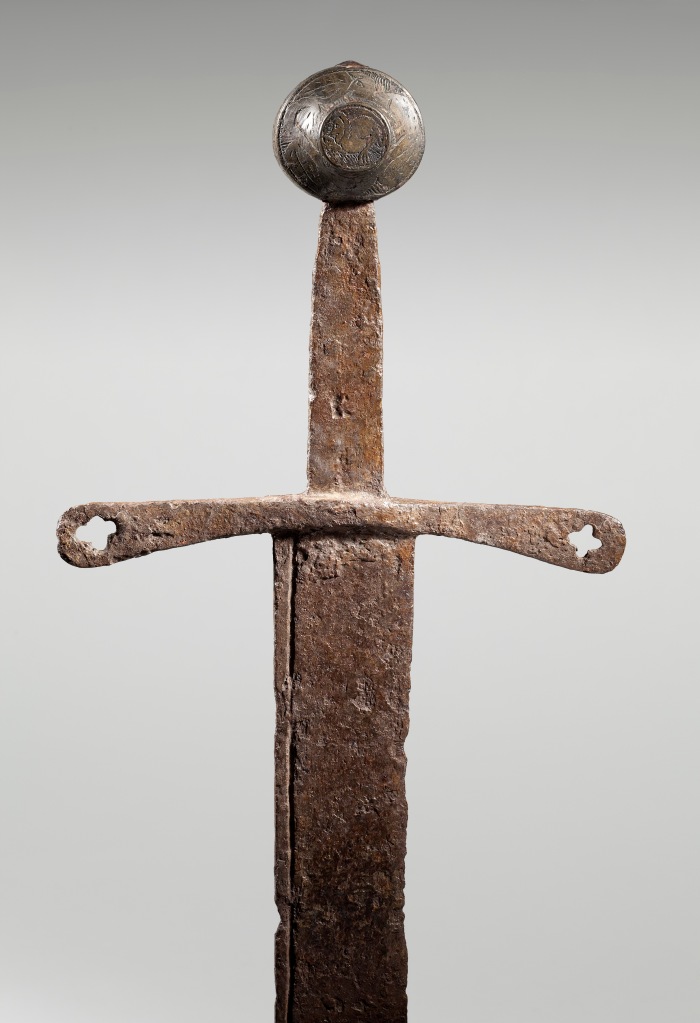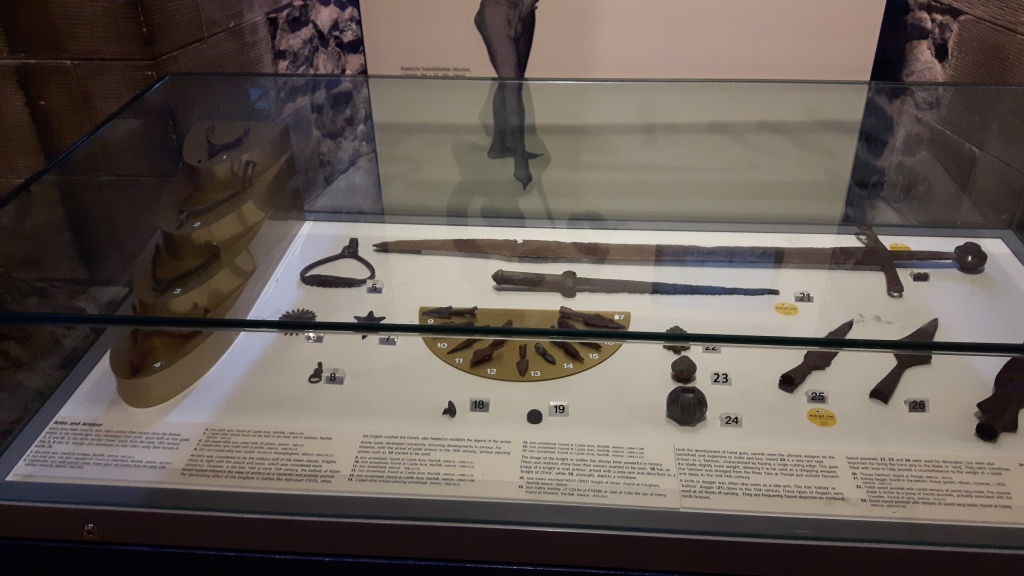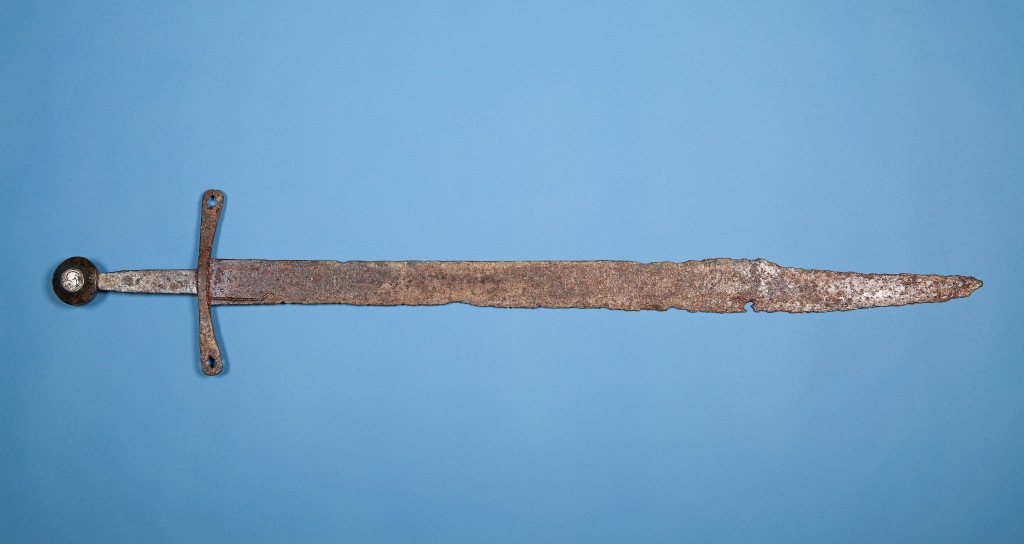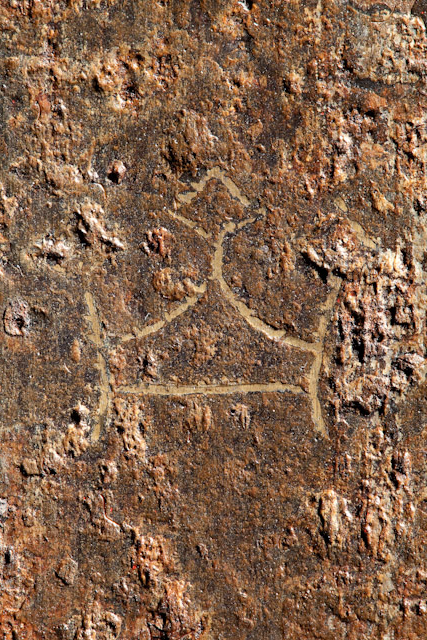Lee Warden, Learning and Engagement Officer, Norwich Castle: Royal Palace Reborn
Without a doubt, swords are the iconic weapon of the middle ages. Yet, sadly, the category of ‘sword’ does not fully represent the plethora of distinct designs which existed throughout the medieval world. I wanted to take a moment to shine a spotlight on one of the incredible objects in Norwich Castle’s collection which represents a change not only in weapon design, but also the armour it had to overcome: the Thorpe Falchion.

Dating all the way back to 1320, the Thorpe Falchion was produced during a period which saw significant advancement in armour worn on the battlefield. Mail armour was becoming more effectively countered by heavy hitting weapons like polearms, or narrow, piercing arrows which slid between the mail rings. Not only was there a need for new armour to be developed, metalworking had advanced to the point that it could reliably produce larger sections of rigid metal with the right properties to act as armour. We therefore begin to see the steady inclusion of solid sections of armour being used over the top of mail in places like elbows, shoulders, knees, and shins – fortifying target areas against strikes with heavy, percussive weapons.

As armour became more commonplace on medieval battlefields, old designs were adapted and new pieces of armour were invented. An arms race raged between armourers and weaponsmiths, as new weapons needed to keep pace and overcome improved armour. The falchion is a great example of how sword design evolved to marry the benefits of two different weapons together.
Falchions are a family of single-edged swords which typically broaden out towards the tip rather than tapering to a point, like most swords. Similar to how an axe is ‘top heavy’, this meant there was more weight at the end of the sword, turning the falchion into an sword-axe hybrid and allowing its wielder to put more weight and force behind each cut – perfect for cleaving through lightly armoured opponents but not ideal against armour designed to stop heavy hitting blows.

Cunningly, towards the tip of the blade the typically blunt back edge of the Thorpe Falchion narrows and would have been sharpened to create a point. The sharpened tip would have allowed the weapon to be thrust into gaps of an opponent’s armour if it couldn’t smash its way through.
Though medieval weapons were made with the morbid purpose of dealing out death as efficiently as possible, it’s clear that the Thorpe Falchion was forged with care by a weaponsmith with a keen eye for detail. Despite being submerged in the River Yare before finally being dredged up in 1833, the sword remains in incredible condition. The mud of the riverbed helped to stop the oxidisation process from rusting the sword away to nothing and, even though the sword is 700 years old, there is still an incredible amount of craftsmanship visible.

Above the hilt is an elegant marking to indicate where to start sharpening the blade from, and further up a symbol of a crown inlaid with brass sits in the centre of the blade. The sword also has a detailed pommel which depicts strange monsters and, being made of brass, its weight acts to counter to the falchions tip, making the weapon more balanced and easier to control.
As with many inventions, style and quality varied. Medieval manuscripts from around 1320 depict peasants and knights alike using falchions in combat. Whilst the peasant falchions might not all have been as well-crafted as the Thorpe Falchion, they applied the same core principles, allowing them to overcome or bypass an opponent’s armour with ruthless efficiency and play a crucial role on the battlefields of the middle ages.
Love medieval history?
Adopt this item, or choose from a huge range of others, and help transform Norwich Castle Keep back into a Norman Royal Palace.
Visit adoptanobject.co.uk to find your special object!




